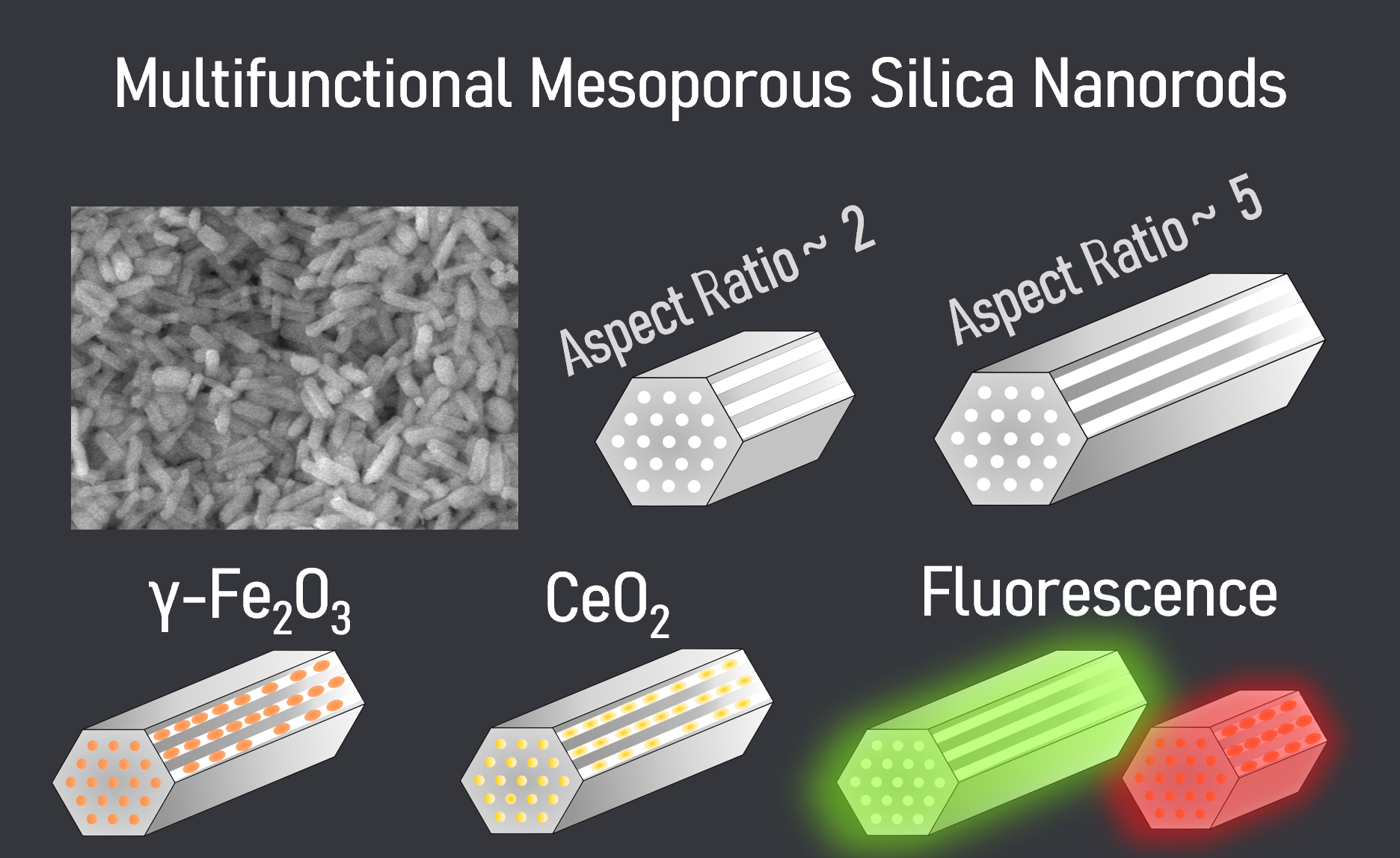
Hot off the press: New Paper in ACS Applied Nano Materials!
The paper “Magnetic Mesoporous Silica Nanorods Loaded with Ceria and Functionalized with Fluorophores for Multimodal Imaging“, was published in ACS Applied Nano Materials.
Former N&N group member Jan Grzelak authored this outstanding publication under the supervision of Anna Roig and Martí Gich and with the collaboration of other research laboratories and institutes.
Abstract:
Multifunctional magnetic nanocomposites based on mesoporous silica have a wide range of potential applications in catalysis, biomedicine or sensing. Such particles combine responsiveness to external magnetic fields with other functionalities endowed by the agents loaded inside the pores or conjugated to the particle surface. Different applications might benefit from specific particle morphologies. In the case of biomedical applications, mesoporous silica nanospheres have been extensively studied while nanorods, with a more challenging preparation, have deserved much less attention despite the positive impact on the therapeutic performance shown by seminal studies. Here, we report on a sol-gel synthesis of mesoporous rod-like silica particles of two distinct lengths (1.4 and 0.9 μm) and aspect ratios (4.7 and 2.2) using Pluronic P123 as a structure-directing template and rendering ~1 g of rods per batch. Iron oxide nanoparticles have been synthesized within the pores yielding maghemite (γ-Fe2O3) nanocrystals of elongated shape (~7×5 nm) with a [110] preferential orientation along the rod axis and a superparamagnetic character. The performance of the rods as T2-weighted MRI contrast agents has also been confirmed. In a subsequent step, the mesoporous silica rods were loaded with a cerium compound and their surface, functionalized with fluorophores (fluorescamine and Cyanine5) emitting at l = 525 and 730 nm respectively, thus highlighting the possibility of multiple imaging modalities. Biocompatibility of the rods was evaluated in vitro in a zebrafish (Danio rerio) liver cell line (ZFL), results showing that neither long nor short rods with magnetic particles caused cytotoxicity in ZFL cells for concentrations up to 50 µg/ml. We advocate that such nanocomposites can find applications in medical imaging and therapy where the influence of shape on the performance can be also assessed.
Anna Roig, Jan Grzelak, magnetic, Martí Gich, mesoporous silica, nanorods

